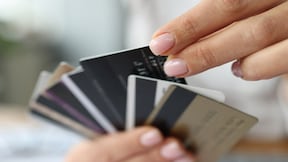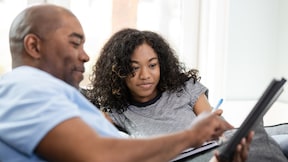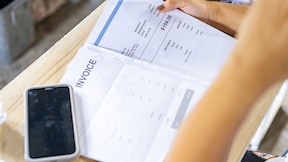Credit card basics
Credit cards can be useful when needed, but you can get the biggest benefits when you understand the basics of credit.
Learning about the basics of credit
credit card basicsIs getting preapproved for multiple credit cards a good idea?

Wondering if getting preapproved for multiple credit card offers is a good idea? Learn the potential benefits and drawbacks of making an informed decision.
credit card basicsA guide to Buffalo Niagara International Airport (BUF)

Learn about terminals, parking and airport lounges at Buffalo Niagara International Airport (BUF) with our airport guide.
credit card basicsHow to teach your child about credit card fraud

Teaching children about credit card fraud can be a helpful step in mitigating the risk of fraud. Here are ways fraud can happen and how to help prevent it.
Learn ways to use your credit card wisely
credit card basics
Is getting preapproved for multiple credit cards a good idea? Wondering if getting preapproved for multiple credit card offers is a good idea? Learn the potential benefits and drawbacks of making an informed decision.
Wondering if getting preapproved for multiple credit card offers is a good idea? Learn the potential benefits and drawbacks of making an informed decision.credit card basics
How to teach your child about credit card fraud Teaching children about credit card fraud can be a helpful step in mitigating the risk of fraud. Here are ways fraud can happen and how to help prevent it.
Teaching children about credit card fraud can be a helpful step in mitigating the risk of fraud. Here are ways fraud can happen and how to help prevent it.credit card basics
A guide to credit limit transfers Explore credit limit transfers and ways you may be able to leverage one to your advantage.
Explore credit limit transfers and ways you may be able to leverage one to your advantage.credit card basics
How to recover from a late credit card payment Missed a credit card payment? Depending how long it's been, you still have some time before it appears as a negative mark on your report. Learn how to recover from a late payment.
Missed a credit card payment? Depending how long it's been, you still have some time before it appears as a negative mark on your report. Learn how to recover from a late payment.credit card basics
Teaching your child the difference between debit and credit cards Learn ways to educate our child on the key differences between debit and credit cards, empowering them with essential financial knowledge for their future.
Learn ways to educate our child on the key differences between debit and credit cards, empowering them with essential financial knowledge for their future.credit card basics
What to do after you’ve been preapproved for a credit card Find out what to do next after getting preapproved for a credit card. Learn the steps to finalize your application and improve your chances of approval.
Find out what to do next after getting preapproved for a credit card. Learn the steps to finalize your application and improve your chances of approval.credit card basics
Is a balance transfer with a starter credit card possible? Starter credit cards may allow balance transfers, but there may be potential caveats to consider. Explore balance transfers on a starter credit cards in this article.
Starter credit cards may allow balance transfers, but there may be potential caveats to consider. Explore balance transfers on a starter credit cards in this article.credit card basics
Finding a credit card that matches your shopping needs Find out how to choose the best credit card for your shopping needs. Compare credit card types, benefits and more to choose one that matches your spending habits.
Find out how to choose the best credit card for your shopping needs. Compare credit card types, benefits and more to choose one that matches your spending habits.
Explore financial education